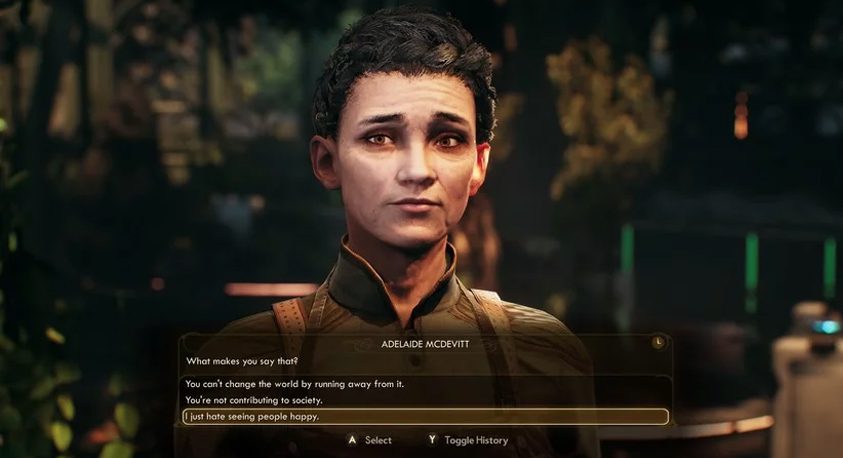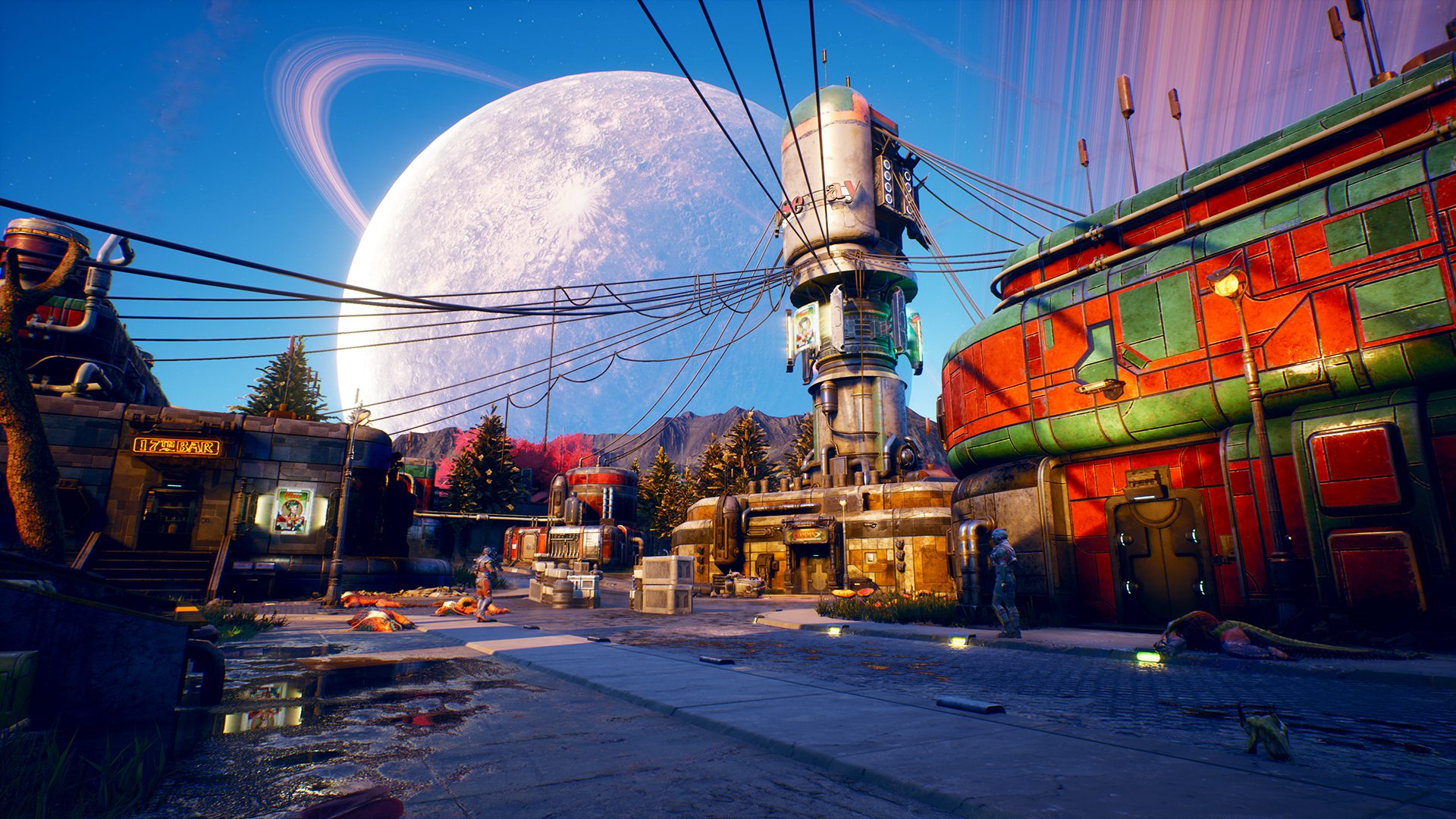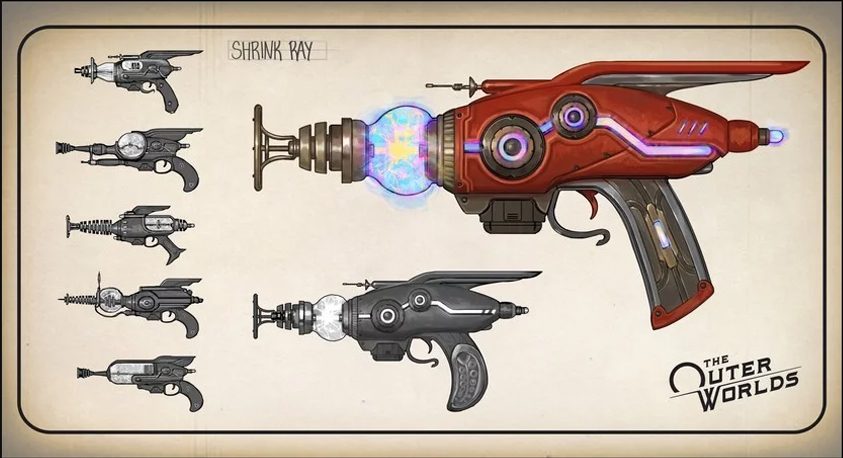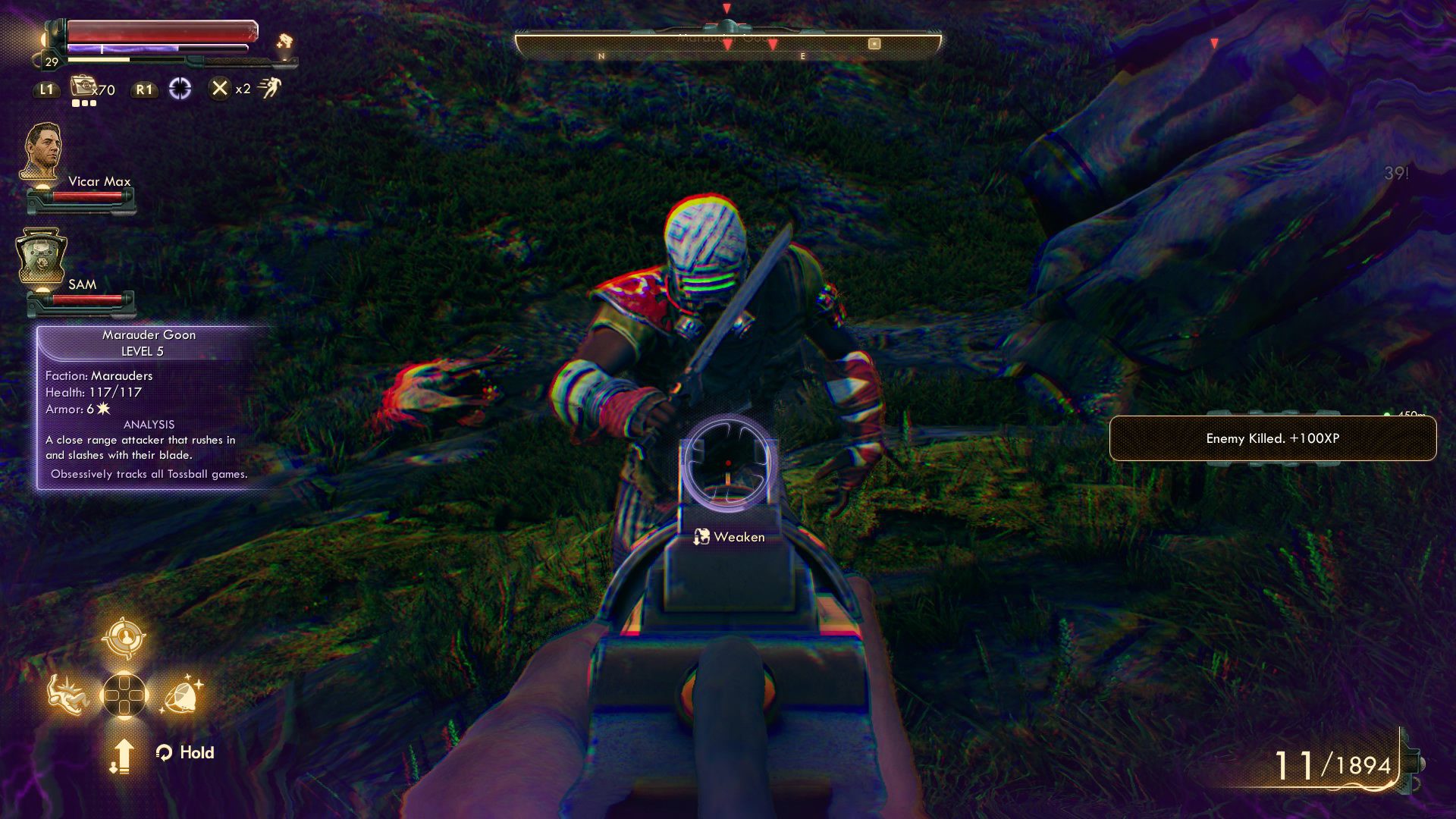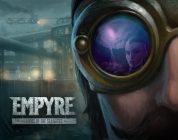It’s hard to go into The Outer Worlds and not think about Fallout, especially since Obsidian boldly declared in their reveal trailer “creators of the original Fallout” and “developers of Fallout: New Vegas”. This reveal also had the benefit of coming in the wake of the poor reception of Fallout 76, which felt like a big departure from the series roots as a single player RPG experience. The story doesn’t end there though. Leading up to the release of The Outer Worlds, Bethesda announced a subscription service for Fallout 76 which resulted in a strong negative reaction in fans and accusations of cyber-bullying against those that were marked as subscribers. This fueled fans’ hunger for a more traditional Fallout experience (in which I mean Fallout 3, New Vegas, and Fallout 4, not the classic titles). So does The Outer Worlds satisfy that hunger and meet its own self proclaimed hype?
The Outer Worlds begins with excitement and intrigue. A stranger has revived you from cryosleep and you quickly find yourself crash landing on a nearby planet. Welcome to Halcyon, where corporations have pretty much gained control over everything. It’s up to you to set the people free, or not; it really is up to you. The Outer Worlds encourages players to explore a multitude of options. Do I return these documents to their owner or do I sell them to the competition? Do I assist the downtrodden as they fight the financial burden of paying for their graves? There are lots of decisions to be made, even at the outset of the adventure.
What I found most surprising was how quickly I found myself conflicted in my choices. Particularly in my first playthrough I was going for a resistance rebel character that fights the corporations and frees the people. However, not long into the game I made the decision to support a group of defectors and I later came across a situation where the defectors were crazy zealots and the leadership of the nearby town had a goal of making changes from within. I paused to reconsider my actions and that is a defining attribute of this game; choices feel like they have an impact. In fact, you can have reverence and anger targeted at you by any given faction or group which creates a pretty wide sliding scale for how your actions are received. Every choice is given a level of validity too, it is rarely as simple as good and bad.
The writing and dialogue of The Outer Worlds deserves praise. It often had me laughing while also (as I have previously mentioned) considering my options. In many ways it reminds me of the snark in Borderlands. Characters feel distinct from each other just as much in the writing as they do in the voice acting. Together it all tells the story of this small collection of planets, moons, and space stations that are struggling. The Outer Worlds does this in such a way that allows for the freedom of choice, without feeling overly forced in one direction or another.
One of the major highlights for me was the companions. The Outer Worlds provides a fun array of characters that can join in the escapades. Initially, my first recruits were essentially an older preacher who is more than he seems and a young, ambitious, and gifted mechanic who just wants to explore what the galaxy has to offer her. Any Firefly fan will see the similarities I’m sure, and trust me as you go through the game they don’t stop there. I’m looking at you doctor who has rejected their rich lifestyle. . . Each of these companions have their own quest lines as well, and pursuing those makes me feel like I’m back on the Normandy in Mass Effect. Each companion also gives the player their own unique bonuses and have special attacks that can be activated. I found myself rotating each of the companions that joined me on a fairly regular basis.
Something I think is important to talk about and is crucial for any open world game is the exploration. This is important for me as I tend to find myself bored with open world games and it’s the story and exploration that determines if I stay. Are the locations varied? Does exploring provide rewarding experiences or in-game items? These are the questions I ask myself while playing.
The Outer Worlds has some great exploration.
Starting out, I had a blast going off the path to find abandoned buildings and encampments of marauders. Often this rewarded me with some loot to sell or even better equipment to use! Occasionally I’d find an area only accessible by jumping onto crates and across gaps and those areas were particularly fun and rewarding to discover. This was often accompanied by a fairly long list of quests and objectives to try and accomplish while I was out there. However, towards the end game I found myself less compelled to explore, even in new locations. Some of these locations seemed to lack buildings so I didn’t have something distinct to go and check out. Opposite was also true, too many buildings made me overwhelmed by too many things. The process of going methodically through each to see which ones were actually available to enter seemed too tedious to take on. The Outer Worlds offers some fantastic, fun, and rewarding exploration but as the game continues it seems to wane.
On the gameplay side, The Outer Worlds is at its core a first-person shooter with RPG elements. Aiming and shooting is what you’d expect to find in any shooter these days. What’s added is a bullet time ( the equivalent of VATS mode from modern Fallout titles) called Tactical Time Dilation or TTD. This slows down time and allows players to target critical points causing various ailments. This also creates an opportunity to see weaknesses and other information about the target. The melee combat has options for holding down the attack for a charged attack and for blocking which if timed correctly will stun attackers.
The RPG elements come in form of leveling up, investing points in skills and perks, and navigating dialogue options. A nice touch to these elements are things like using a social skill like Lying or Intimidation or even knowledge like Science in a conversation which is also rewarded with experience points. There are also opportunities to take on flaws; these flaws will give the player a penalty in certain situations. Being afraid of a specific enemy type, for example, will lower specific stats when near them. The plus side to flaws though is that by accepting the flaw players are given an immediate point to spend on a perk. So while there are a couple of new additions, it’s safe to say that overall the gameplay in The Outer Worlds feels familiar to any modern Fallout fan.
Scattered throughout the edge of the galaxy is equipment of all shapes and sizes. While a bigger variety would have been nice since seeing the same weapons and armor over and over can grow boring, there are some unique items to find. These unique items tend to give substantial bonuses or even unique effects like in the case of one of the science weapons the Shrink Ray. Where The Outer Worlds offers variety is in its mod and tinker systems. Players can attach all sorts of mods to both weapons and armor. These can increase damage, magazine capacity, damage type, or add bonuses to skills. On top of that once the engineering skill is high enough, you can tinker with equipment which adds small bonuses per level of tinkering. This system allows players to keep a weapon that they may be particularly attached to for far longer than they might otherwise.
Visually, The Outer Worlds is a bit of a mix of 1950s advertising mixed with sci-fi space serials of the same era, and a fairly vibrant color scheme. In many ways it makes me think “Hey, you got some Borderlands in my Bioshock!”. The alien creatures, landscapes and sky, the cheap pod-based construction of buildings, and corporate advertising make for unique locales. Obsidian truly embraced the 50s sci-fi aesthetic and it shows everywhere in the game. Armor, ships, weapons, and creatures all could easily be found on the cover of a vintage novel. Each corporation also has it’s distinct style, mascots, font types, and colors. All of this together helps incentivize looking at everything. I’d love to see an art book for this game somewhere down the line.
For the majority of my time with the game, it ran smoothly and was stable. However, when first entering an area, pop-in was fairly prominent as was a drop in framerate. Beyond that though I rarely saw the game struggle on my regular PS4.
On the audio side, The Outer Worlds provides full voice acting, satisfying sound effects, and interesting and appropriate ambient noises. Firing a mind control ray is so much more fun when you get the warbling digital noise that emits from it when it is fired. Using an electric based melee weapon becomes empowering as it crackles when swung through the air. Passing by people in conversation make a city feel more alive and lived in. What is lacking in The Outer Worlds is any notable music, and as I write this I’m having a hard time recalling if there was any at all outside of the jingles of the various corporate vending machines. Fallout notably had an in-game radio for players to tune into, so it’s noticeable that a similar feature is missing. This may seem unfair but when a game is self-compared to another it’s hard not to also make that comparison, and The Outer Worlds, is missing some music.
The Outer Worlds is a familiar experience with an exciting new look and feel. Coming in the wake of a Fallout game with mixed reviews, and a poorly received subscription service, The Outer Worlds is in a prime position to make its mark on the genre, successfully combining aspects from a number of critically praised games like Bioshock, Borderlands, and it’s primary inspiration Fallout. I’m already excited for future playthroughs with new builds and different choices to see how they impact the end.
I can’t wait to see more of what The Outer Worlds has to offer.
For more information on The Outer Worlds, check out the official website. A digital PS4 copy was provided for the purpose of review. For more review content, check out my take on another well-received RPG, Disco Elysium. For more sci-fi, check out our review of Daemon X Machina, a mecha action game on the Switch.


